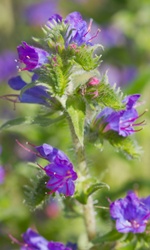 Omega-3s are important for your health—that’s been established in countless studies. But it’s not always easy to get a lot of these essential fatty acids into your daily diet. The reasons for this are complex and span problems as diverse as the increasing world population, overfishing, and generally low amounts of omega-3s in foods other than fish.
Omega-3s are important for your health—that’s been established in countless studies. But it’s not always easy to get a lot of these essential fatty acids into your daily diet. The reasons for this are complex and span problems as diverse as the increasing world population, overfishing, and generally low amounts of omega-3s in foods other than fish.
There is a real need for new sources of omega-3s.
Stepping into the void is a little-known vegetable source of omega-3s derived from echium seeds. A recent study found that the oil contained the highest amount of total omega-3 fatty acids in an analysis of 30 types of seeds investigated by a team of researchers.
The scientists were searching for potential new sources of two particular omega-3s: alpha-linolenic acid (ALA) and stearidonic acid (SDA). Echium oil turned out to be high in both. In humans, ALA is converted to SDA, and SDA helps with the synthesis of omega-3 long-chain polyunsaturated fatty acids. Therefore, the researchers concluded, echium seed oil could be very important for nutrition as it contains all the necessary fatty acids for uptake into the body.
Taking this one step further—SDA helps with the biosynthesis of eicosapentanoic (EPA) and docosahexaenoic (DHA) acids. Your body needs them to maintain cell membrane function. In general, higher intakes of all of these omega-3 fatty acids are thought to help with the prevention of inflammatory diseases, such as arthritis, heart disease, and autoimmune diseases.
There are other important nutrients in echium oil. It contains gamma-linoleic acid or GLA—another big player when it comes to boosting overall health. In fact, echium seed oil may have the optimum ratio of omega-3 to omega-6 fatty acids not present in any other plant.
It may be a bit of a challenge to find echium seed oil, but it is starting to appear on shelves in health-food stores across North America.
Sources for Today’s Articles:
Finally, an Omega-3 Source That Isn’t Fish
Kuhnt, K., et al, “Searching for health beneficial n-3 and n-6 fatty acids in plant seeds,” European Journal of Lipid Science and Technology, February 2012;114(2):153-160.
